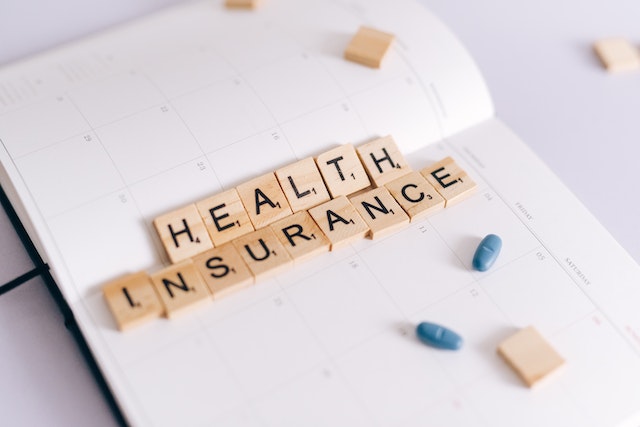Cheapest Way to See a Doctor Without Insurance
For those without health insurance, seeing a doctor can be a daunting task. Medical bills can add up quickly, leaving many to wonder if they can afford to seek medical care at all. However, there are options available for those looking to see a doctor without insurance.
One option is to ask about a cash discount. Many providers offer discounts for patients who pay in cash. It’s important to shop around and compare prices to find the best deal. Patients can also ask for a price estimate before scheduling an appointment to avoid any surprises.
Additionally, some providers may offer payment plans for those who cannot afford to pay the full amount upfront.
Another option is to consider Direct Primary Care (DPC). DPC offers patients easier access to doctors and longer visits if needed. This model of care also tends to be less expensive than traditional medical practices that take insurance.
Patients pay a monthly fee to their DPC provider, which covers most primary care services. This fee is often much lower than the cost of health insurance premiums.
Table of Contents
Community Health Clinics
Community health clinics are nonprofit health centers that offer low-cost or free care to those who cannot afford insurance.
These clinics are often staffed by volunteer doctors, nurses, and other healthcare professionals who donate their time to help those in need.
What are Community Health Clinics?
Medical facilities that offer primary care and preventive services to underserved populations are known as community health clinics.
These clinics are usually situated in regions where there is a high demand for medical care but a low supply of healthcare providers. Community health clinics provide a broad range of services, such as:
- Primary care
- Preventive care
- Dental care
- Mental health services
- Substance abuse treatment
- Vision care
- Pharmacy services
How to Find a Community Health Clinic
Finding a community health clinic is easy. There are several ways to locate a community health clinic in your area:
- Use the Health Resources and Services Administration (HRSA) website to search for community health clinics by zip code or state.
- Contact your local health department for a list of community health clinics in your area.
- Check with your local hospital or medical center to see if they offer community health services.
Once you have identified a community health clinic in your area, you can contact them to schedule an appointment. Most community health clinics offer same-day or next-day appointments, and many clinics offer extended hours to accommodate patients’ schedules.
Urgent Care Centers
What are Urgent Care Centers?
Medical facilities that provide non-emergency medical care are known as urgent care centers. They are equipped to manage a broad range of medical issues, from minor injuries to illnesses.
Urgent care centers employ healthcare professionals, including physicians, nurse practitioners, and physician assistants.
They are intended to offer medical care to patients who require immediate attention but do not require emergency care.
Urgent care centers are an affordable alternative to emergency rooms. They offer shorter wait times and are less expensive than emergency rooms.
According to a study by the Urgent Care Association, the average cost of a visit to an urgent care center is $150, while a visit to an emergency room can cost upwards of $1,000.
How to Find an Urgent Care Center
Finding an urgent care center is easy. Most centers are open seven days a week and have extended hours. Patients can walk in without an appointment and be seen by a healthcare professional.
Some urgent care centers also offer online check-in, allowing patients to reserve a spot in line before they arrive.
Patients can find urgent care centers by using online directories or by asking their primary care physician for a referral.
Health insurance providers also have directories of in-network urgent care centers, which can help patients find an affordable option.
It is important for patients to research urgent care centers before visiting. Patients should check the center’s hours of operation, services offered, and insurance acceptance. Some centers may not accept certain types of insurance or may not offer the services a patient needs.
In conclusion, urgent care centers are a cost-effective option for patients who need non-emergency medical care.
They offer shorter wait times and are less expensive than emergency rooms. Patients can easily find an urgent care center by using online directories or asking their primary care physician for a referral.
Telemedicine
What is Telemedicine?
Telemedicine is a way to access medical care remotely using technology such as video conferencing, phone calls, or text messaging. It allows patients to communicate with healthcare professionals without having to travel to a physical office.
Telemedicine can be used to diagnose and treat a variety of medical conditions, including minor illnesses and injuries, chronic conditions, and mental health concerns.
Telemedicine can be an affordable and convenient option for those without insurance. Many telemedicine providers offer low-cost or even free consultations, making it an accessible option for those who may not have the financial means to see a doctor in person.
How to Access Telemedicine Services
To access telemedicine services, patients can use a computer, smartphone, or tablet with an internet connection. Many telemedicine providers have their own apps or websites that patients can use to schedule appointments and communicate with healthcare professionals.
Some telemedicine providers may require patients to create an account and provide personal and medical information before scheduling an appointment. Patients may also need to provide payment information if the service is not free.
It is important to note that telemedicine services may not be able to provide the same level of care as an in-person visit.
Telemedicine providers may not be able to diagnose certain conditions or provide certain treatments, and may need to refer patients to an in-person healthcare professional for further evaluation.
Overall, telemedicine can be a convenient and affordable option for those without insurance to access medical care. Patients should research and compare different telemedicine providers to find the best option for their needs.
Prescription Discount Programs
Prescription drugs can be expensive, but there are programs available to help people afford their medications.
Prescription discount programs provide discounts on prescription drugs to people who do not have insurance or who have high out-of-pocket costs for their medications.
What are Prescription Discount Programs?
Prescription discount programs are programs that offer discounts on prescription drugs to people who cannot afford to pay for their medications.
These programs are typically offered by the makers of prescription drugs and are designed to help people who do not have insurance or who have high out-of-pocket costs for their medications.
Some prescription discount programs are free, while others require a fee to join. The discounts offered by these programs can vary, but they can be substantial. Some programs offer discounts of up to 80% off the retail price of prescription drugs.
How to Find a Prescription Discount Program
There are several ways to find a prescription discount program. One way is to check with the makers of your prescription drugs. Many drug makers offer discount programs to help people afford their medications.
Another way to find a prescription discount program is to check with your local pharmacy. Many pharmacies offer discount programs to their customers. These programs can provide significant savings on prescription drugs.
There are also websites that can help you find prescription discount programs. These websites allow you to search for programs based on the medications you take and your location.
When looking for a prescription discount program, it is important to read the fine print. Some programs have restrictions on the medications they cover or the pharmacies where you can use the discount. It is also important to make sure that the program is legitimate and not a scam.
In conclusion, prescription discount programs can be a great way to save money on prescription drugs. By taking the time to research and find a program that works for you, you can save money and get the medications you need.
Conclusion
In conclusion, there are several affordable options for individuals who need to see a doctor without insurance. By doing a bit of research, individuals can find clinics and medical practices that offer reduced fees for uninsured patients.
Direct Primary Care (DCP) is a great option for those who need regular medical care. DCP practices offer longer doctor visits, easier access, and lower costs than medical practices that take insurance. It is important to note that DCP is not the same as concierge medicine, which can be very expensive.
Another option is to visit community health centers or free clinics. These clinics offer low-cost or free medical care to individuals who cannot afford it.
They may also offer prescription drug assistance programs and other resources to help individuals manage their health.
It is also worth considering telemedicine services, which allow individuals to consult with a doctor or nurse practitioner remotely.
These services are often more affordable than in-person visits and can be a convenient option for minor illnesses or injuries.
Overall, while the cost of medical care can be a major barrier for uninsured individuals, there are options available for those who need to see a doctor.
By exploring these options and doing some research, individuals can find affordable and accessible medical care.







